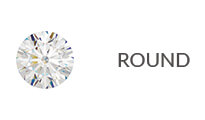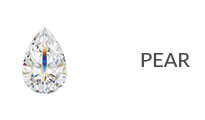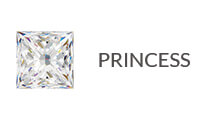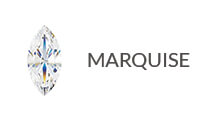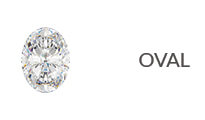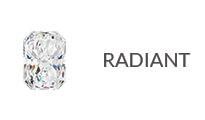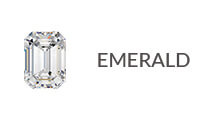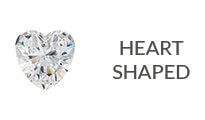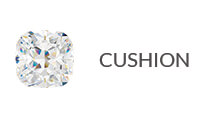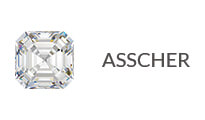Diamond Education
This Diamond Education defines the most essential characteristics of a diamond along with tips for its care. By understanding these characteristics, you'll be able to shop with confidence.
-
Education
Cut
A diamond's cut is the most important property to enhance its beauty because a well-cut diamond reflects light to maximize the stone's brilliance. A diamond with perfect color and clarity could have poor brilliance if it is not well cut.
After proper cutting, the size of the stone may reduce by half, but its market value may increase more than four times for its brilliance and sparkle. Diamonds have a unique ability to manipulate light efficiently. This exceptional ability can be realized and maximized only by cutting and polishing the diamond with an extremely high level of accuracy.
It is very essential to know diamond anatomy before understanding cut.
Diamond Anatomy

* Diameter: Width of a diamond measured through the Girdle.
* Table: Largest facet of a gemstone.
* Crown: Top portion of a diamond extending from the Girdle to the Table.
* Girdle: Intersection of the Crown and Pavilion which defines the perimeter of the diamond.
* Pavilion: Bottom portion of a diamond, extending from the Girdle to the Culet.
* Culet:Facet at the tip of a gemstone. The preferred Culet is not visible with an unaided eye (graded "none" or "small").
* Depth: Height of a gemstone measured from the Culet to the Table.The cut of a diamond establishes how it reflects light, which is responsible for its sparkle or brilliance. Cut has following three components:
Diamond Cut by Shape
A diamond cut by shape describes the outline of the stone and pattern of the facet arrangement. A stone can be cut in various shapes like Round, Princess, Heart, Oval, Pear etc. We will further explore various diamond shapes in the Shape section.

Diamond Cut by Depth
A diamond cut by depth is the ultimate feature for its brilliance and fire.
Shallow Cut: a shallow cut will lose light through a diamond's bottom causing it to appear dull.
Deep Cut: a deep cut will lose light through a diamond's sides causing it to appear dark.
Ideal Cut: An ideal cut is considered the best cut and it will reflect most or all of the light that enters the diamond back to the eyes.The quality of a diamond's cut can be determined on the basis of its power to reflect light. The cuts can be broadly characterized as Ideal, Excellent, Very Good, Good, Fair or Poor. Ideal or Excellent cuts release the inner brilliance of the stone and project maximum amount of fire and sparkle. Very Good, Good and Fair cuts lose some light that enters the diamond. A poor cut loses most of its light from the diamond sides / bottom and it may even have some "dead" spots inside.

Diamond Polish and Symmetry
Polish and symmetry are two important aspects of the cutting process. The diamond polish shows the smoothness of the diamond's facets, whereas the symmetry refers to alignment of the facets. A poor diamond polish, or rough facets, can diminish a diamond's brilliance, as well as its value.

-
Education
Color
Diamonds are found in all colors of the rainbow, from colorless and transparent stones to ink black ones. Varying degrees of yellow or brown color is common in most of the diamonds and a slight difference in color can make a substantial difference in value. A truly colorless diamond is extremely rare and considered the most valuable. It allows the most light to pass through the stone and create the most brilliance.
During the formation of diamond from carbon, certain chemicals may have been drawn into the mix and result in added tinges of color in the transparent stone.
Most diamonds appear white to the naked eye, but they all include trace amounts of yellow or brown color. The color scale goes from D to Z (no diamond of color grade A, B or C has ever been found), with D being the most white and Z being the most yellow. The best way to see the true color of a diamond is by looking at it against a white surface.
Diamond Color Grade Table
Color Grade Description Unaided Eye Inspection 
Colorless Stone looks absolutely clear and transparent, with no hint of color. 
Near Colorless Stone looks clear and transparent. Color will be noticeable by experts only when compared to diamonds of better grades. 
Faint yellow Color slightly detectable and will be noticeable by experts only. 
Very Light yellow Stone shows an increasing yellow tint, even to an untrained eye. 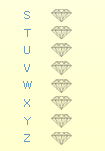
Light yellow Stone appears yellow, even to an untrained eye. 
Fancy Bright, remarkable color - usually blue, pink, yellow, Red etc. Fancy Colored Diamonds
Although majority of diamonds come in shades of white, there are also "Fancy" natural intensely colored diamonds available in colors like yellow, pink, greens, brown, red, orange, blue etc. These intensely colored diamonds are very rare, attractive and desirable. A deeply colored diamond can cost more than its colorless counterpart. These intensely colored diamonds are known as "Fancy" colored or "Fancies". Fancy colored diamonds are graded in two ways. The first factor is the basic hue, such as pink, yellow, blue, green, etc. The second is the intensity. Both color characteristics form the basis for determining a fancy colored diamond's worth. In fancy colored diamonds, a Z+ grade is used for their color grading. Usually, the more intense the color, the rare and expensive the diamond will be. For example, a fancy light pink diamond costs less than a fancy vivid pink diamond of equal size, shape and clarity. Though fancy colored diamonds rarely occur in nature, laboratories can easily create them through irradiation and heating. This process can permanently turn a natural colorless diamond into a fancy colored diamond. Treatments have also been developed to make lower-color white diamonds whiter. Irradiated colored diamonds have a significantly lower value than natural fancy diamonds and can be detected in a gem laboratory.
Fluorescent Diamonds
Fluorescence is a form of illumination that is created when a diamond is exposed to low or high wave ultraviolet radiation. Fluorescence up to some extent is common in the majority of diamonds. Faint or medium fluorescence will rarely affect a diamond's appearance. Usually fluorescence remains unnoticed by human eyes in ordinary light.
-
Education
Clarity
Clarity is a term used to describe the absence or presence of flaws inside or on the surface of a diamond. In other words, the clarity of a diamond refers to a diamond's clearness or purity.
When these flaws / marks occur internally, they are called inclusions. The most common types of inclusions include crystals, (tiny bubbles representing small minerals that were absorbed into the diamond while it was growing), internal graining, needles, knots, chips, cavities, cleavage, feathers, and clouds. On the contrary, when these flaws / marks occur on the surface, they are known as blemishes. The most common types of blemishes include polish lines, naturals, scratches, nicks, pits, transparent stress lines that appear on a diamond's surface, surface graining, and extra facets. Blemishes are usually cut to remove a near-surface inclusion to raise the clarity grade of a stone. Most diamonds have these imperfections in them. Although many of these flaws are not visible to the naked eye, but under magnification, tiny featherlike shapes, crystals, bubbles and dark flecks become noticeable. These slight flaws make every diamond quite unique but they also affect the beauty and value of the diamond.
A diamond's clarity is based on the number, size, nature, and location of imperfections on the finished stone. A diamond with higher clarity is more valuable in comparison to a diamond that contains numerous inclusions because it is less brilliant, as the inclusions interfere with light passing through it.
Diamond Clarity Grading Scale Table
Image Clarity Grade Scale Description On Inspection through 10x magnification 
F Flawless Clear Stone, no inclusions or blemishes. Exceptional and beautiful diamonds. 
IF Internally Flawless No inclusions and only insignificant surface blemishes. Rare and beautiful diamonds. 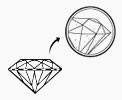
VVS1 – VVS2 Very, Very Slightly Included – 1 & 2 Tiny inclusions, which are extremely difficult to find, even under 10x magnifications. An excellent quality diamond. 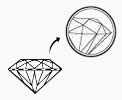
VS1 – VS2 Very Slightly Included – 1 & 2 Minor inclusions, which are difficult to see under 10 x magnification. These stones are less expensive than the VVS1 or VVS2 grades. 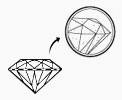
SI1 – SI2 Slightly Included – 1 & 2 Inclusions, which are easy to see under 10 x magnification. A good diamond value. 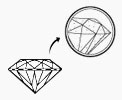
I1 – I2 – I3 Included – 1, 2 & 3 Inclusions, which are easy to see under 10 x magnification and sometimes, may be visible with the unaided eye. A good diamond value. Generally I3 grade is not used for jewelry purposes and mostly used in industrial applications. -
Education
Carat
The term "Carat" refers to the weight of a diamond. It is derived from the carob seeds, which are remarkably consistent in weight and shape and so were the favored scale balances in ancient times. This weight scale was standardized in 1907 and after that 1 carat became 0.2 grams or 1/142 of an ounce. Furthermore, each carat is divided into 100 points. Therefore, a ¼ carat diamond is 25 points and ½ carat diamond is 50 points and so on. This term ''Carat'' is different from the term ''Karat'' which is used to describe gold's fineness or purity. When we consider all four Cs that determine the value of a diamond, we can find Carat weight most accurately and easily by using a delicately balanced scale capable of weighing extremely small stones.
Diamond's Carat Weight Scale

There is one significant fact about diamonds' weight and price. When diamonds are mined, large diamonds are discovered rarely in comparison of small ones, which make large diamonds much more valuable. For that reason, the price of a diamond rises exponentially with its size. So, a 2 carat diamond of a given quality is always worth much more than two 1 carat diamonds of equal quality. Although larger stones are often more highly valued, size should not be the only consideration. High brilliance, which varies according to clarity, cut, and color grade, is highly desirable in a diamond.
-
Education
Shape
A diamond cut by shape describes the outline of the stone and pattern of the facet arrangement. Diamonds are available in various shapes like Round, Princess, Heart, Oval, Pear etc., but when most people think of diamonds, what comes to mind is the modern round brilliant cut because in the jewelry industry, this shape represents more than 75% of all sales. All other non-round shapes are called fancy shapes and these different diamond shapes reflect an individual's style and personality.
The most popular and stylish shapes are defined below:
Round Brilliant Cut
 The Round Brilliant Cut diamond is the most traditional and popular of all the diamond shapes. Many experts consider this shape ideal for a diamond because it maximizes its sparkle. It has 58 facets which offer great brilliance and stability. This shape of diamond is most commonly used in solitaire diamond engagement rings.
The Round Brilliant Cut diamond is the most traditional and popular of all the diamond shapes. Many experts consider this shape ideal for a diamond because it maximizes its sparkle. It has 58 facets which offer great brilliance and stability. This shape of diamond is most commonly used in solitaire diamond engagement rings.Princess Cut
 The Princess Cut is the most popular non-round diamond. It's beautiful brilliance and unique cut makes it a favorite for engagement rings. The princess has pointed corners and is traditionally square in shape. The ideal princess cut will have a length to width ratio is as close to 1.00:1.00 as possible, as princess cut diamonds can range from this perfect square to almost rectangular.
The Princess Cut is the most popular non-round diamond. It's beautiful brilliance and unique cut makes it a favorite for engagement rings. The princess has pointed corners and is traditionally square in shape. The ideal princess cut will have a length to width ratio is as close to 1.00:1.00 as possible, as princess cut diamonds can range from this perfect square to almost rectangular.Emerald Cut
 The Emerald Cut diamond is a square or rectangular shaped stone with cut corners. This is also known as a Step Cut because it has rows of facets, usually 48 to 50, that resemble a staircase. Due to its larger, more open table, this shape highlights the clarity of a diamond, but with fewer facets has less brilliance than the other shapes.
The Emerald Cut diamond is a square or rectangular shaped stone with cut corners. This is also known as a Step Cut because it has rows of facets, usually 48 to 50, that resemble a staircase. Due to its larger, more open table, this shape highlights the clarity of a diamond, but with fewer facets has less brilliance than the other shapes.Oval Cut
 The Oval Cut is also a beautiful shape and provides great brilliance and fire through its 56 facets. A well cut Oval shaped diamond can be almost as bright as a well cut Round Brilliant shaped diamond.
The Oval Cut is also a beautiful shape and provides great brilliance and fire through its 56 facets. A well cut Oval shaped diamond can be almost as bright as a well cut Round Brilliant shaped diamond.Marquise Cut
 The Marquise Cut is a traditional shape, having elongated ends at both edges. The pointed ends make this shape the most fragile and the most expensive of brilliant style cuts. It has a total of 56 facets, the construction of which requires a lot of experience, as the delicacy of its sharp points demands the utmost skill and precaution. This shape is very popular for engagement rings.
The Marquise Cut is a traditional shape, having elongated ends at both edges. The pointed ends make this shape the most fragile and the most expensive of brilliant style cuts. It has a total of 56 facets, the construction of which requires a lot of experience, as the delicacy of its sharp points demands the utmost skill and precaution. This shape is very popular for engagement rings.Pear Cut
 The Pear Cut diamond is often called a teardrop due to its single point and rounded end with 56 to 58 facets. This shape is popular for its uniqueness and brilliance. A Pear Shape diamond is used in pendants and is also a good choice for a hand with smaller fingers.
The Pear Cut diamond is often called a teardrop due to its single point and rounded end with 56 to 58 facets. This shape is popular for its uniqueness and brilliance. A Pear Shape diamond is used in pendants and is also a good choice for a hand with smaller fingers.Asscher Cut
 The Asscher Cut is a modified version of the Emerald Cut. This shape is named after Joseph Asscher of Holland who was an eminent diamond cutter. In 1902, his company, Asscher Diamond Co., developed and patented the Asscher Cut, a squarer step cut with an almost octagonal outline. This new cut enhances the fire and light of the stone; it has a small table, a high crown, wide step facets, a deep pavilion and a square culet.
The Asscher Cut is a modified version of the Emerald Cut. This shape is named after Joseph Asscher of Holland who was an eminent diamond cutter. In 1902, his company, Asscher Diamond Co., developed and patented the Asscher Cut, a squarer step cut with an almost octagonal outline. This new cut enhances the fire and light of the stone; it has a small table, a high crown, wide step facets, a deep pavilion and a square culet.Radiant Cut
 The Radiant Cut is a rectangular or square stone with cut corners. This shape comes with 62 to 70 facets and offers the elegance of the emerald shape with the brilliance of the princess shape. Trimmed corners are the signature of this shape, and help to make the radiant cut a popular and versatile choice for jewelry. Diamonds with the radiant shape look very good when adorned with baguettes or round side stones.
The Radiant Cut is a rectangular or square stone with cut corners. This shape comes with 62 to 70 facets and offers the elegance of the emerald shape with the brilliance of the princess shape. Trimmed corners are the signature of this shape, and help to make the radiant cut a popular and versatile choice for jewelry. Diamonds with the radiant shape look very good when adorned with baguettes or round side stones.Heart Cut
 The human heart is the ultimate symbol of love and the Heart Cut is regarded as the most romantic of all the shapes. The Heart shaped diamond is essentially a pear-shaped diamond with a cleft at the top and typically contains 59 facets. Due to the complexity of the shape, skilled cutting is necessary to maintain the diamond's brilliance. Generally, people prefer a heart shape diamond for sentimental purposes. This shape is mostly used in pendants, but also suitable for most jewelry items.
The human heart is the ultimate symbol of love and the Heart Cut is regarded as the most romantic of all the shapes. The Heart shaped diamond is essentially a pear-shaped diamond with a cleft at the top and typically contains 59 facets. Due to the complexity of the shape, skilled cutting is necessary to maintain the diamond's brilliance. Generally, people prefer a heart shape diamond for sentimental purposes. This shape is mostly used in pendants, but also suitable for most jewelry items.Cushion Cut
 Cushion Cut diamonds are also known as "pillow cut" diamonds. This shape ranges from square to rectangular and it has rounded corners and larger facets to increase its brilliance. These larger facets also highlight the diamond's clarity.
Cushion Cut diamonds are also known as "pillow cut" diamonds. This shape ranges from square to rectangular and it has rounded corners and larger facets to increase its brilliance. These larger facets also highlight the diamond's clarity.Baguette Cut
 The Baguette Cut diamonds are generally used to fill in channels or stable grooved tracks around a gemstone centerpiece. This shape is similar to emerald shape.
The Baguette Cut diamonds are generally used to fill in channels or stable grooved tracks around a gemstone centerpiece. This shape is similar to emerald shape.Trilliant Cut
 The Trilliant Cut is one of the more unusual cuts and a diamond with this shape displays a very sharp brilliance or fire. This triangular shaped diamond may either have pointed corners or more rounded corners.
The Trilliant Cut is one of the more unusual cuts and a diamond with this shape displays a very sharp brilliance or fire. This triangular shaped diamond may either have pointed corners or more rounded corners. -
Education
Certification
Acquisition of a diamond or diamond jewelry is an important expression of love or accomplishment but it can also represent a major investment of money. It is essential for you to know the credentials of the diamond and enable confidence in the integrity and quality of what you have acquired.
A Diamond Certificate or Diamond Grading Report is a statement, issued by an independent Gemological Laboratory. At the time of evaluation, the diamond in question has been examined, measured, and scrutinized by experienced Diamond Graders, using various gemological instruments, and determined to contain the characteristics as stated in the Certificate or Report.
In other words, a diamond certificate can be accurately described as the blueprint of a diamond. This Certificate or Report includes an analysis of the diamond's characteristics in an easy to understand format. Generally, a certificate or report covers the following characteristics of a diamond along with the laboratory and certificate details:
• Name of the Laboratory
• Certificate Number
• Shape and Cutting Style
• Measurements of the Diamond's diameter
• Carat Weight
• Color Grade
• Clarity Grade
• Cut Grade
• Finish, Polish & Symmetry
• Fluorescence
• Comments
• Plotted diagram of the diamond that shows the imperfections.
• Key to Symbols that help identify characteristics marked in the plot.
• Security Features for the Certificate
• Graphical image of Diamond Structure
• Information about Diamond's Depth, Table, Girdles, Culet and Facets etc.
This certificate doesn't state the monetary value of a diamond.There are many laboratories available throughout the world for diamond certification but the below mentioned laboratories are considered the most respected ones in the industry, for their consistency and unbiased diamond grading systems. Securing a certificate will provide you much-needed peace of mind knowing that you are getting your money's worth. Here are some reasons to buy a diamond along with its certificate:
A diamond certificate gives you the exact details of the stone and on the basis of this information you will be able to do some comparison-shopping before doing the actual purchase. A diamond certificate allows you to purchase on the basis of a stone's characteristics.
If you resell the diamond along with its certificate, you will get better price for the diamond. To get insurance for your diamond, you also need to produce a diamond certificate.
• The Gemological Institute of America (GIA)
The Gemological Institute of America was established in 1931 in Los Angeles. The GIA created and introduced the international grading system. Headquarters are still located in Los Angeles.
• The Diamond High Council (HRD)
The Diamond High Council is the officially recognized representative of the Belgium diamond trade and industry. HRD headquarters are located in Antwerp, Belgium, in the World Diamond Center.
• The American Gem Society Laboratories (AGSL)
The American Gem Society Laboratories (AGSL) was established in 1934 in Las Vegas, Nevada by Robert M. Shipley, who also established the GIA.
It is standard practice in the diamond industry, to ask for a diamond's certificate or grading report from the jeweler before the purchase of it.
-
Education
Care
Diamonds are 'forever' as they are the hardest known substances on earth. But due to our day-to-day activities, it is inevitable that our precious diamond pieces get dirty and soiled. Even diamonds can be scratched, chipped or dulled if not handled correctly. With proper care, they can last a lifetime and can even be handed down as heirlooms to future generations without losing their shine and sparkle. Here are some tips that will help you to preserve the life and beauty of your diamond:
Cleaning of Diamond Jewelry
Regular cleaning of Diamond Jewelry is essential to maintain the shine and brilliance of diamonds. As you wear them, they get dirty as you use various skin and body care regimen such as soaps, lotions and even our skin's natural oils. Even when you are not wearing them, they collect dust. If you are cleaning your diamond jewelry on your own, it will take a few minutes but before cleaning, you should be aware of both the cleaning at home and cleaning by a professional jeweler:
• You can use a small soft brush such as an eyebrow or lip stick brush, soap and water to clean your diamond jewelry. Simply blend a bowl of warm sudsy water with a mild detergent and gently place your jewelry pieces in the mixture. Then brush the diamonds with the soft bristles of the brush while they are in the suds. You will need to make certain that you rinse them clear of the suds after cleaning them. After this process, use a soft cloth or a jewelry polish cloth to pat them dry.
• If you feel that your diamond jewelry is in need of a stronger cleansing, then you can use a solution of one-part ammonia and six parts water for cleaning the diamonds. Once they soak for 30 minutes, remove them and gently brush the mountings with a small soft brush. Then use the mixture of soap and water to wash them, then use a soft cloth to pat them dry.
• If you find yourself too busy to be mixing soaps and ammonias, you can use liquid jewelry cleaners which are sold by many department and jewelry stores. You can find these liquid jewelry cleaners in kit form. Just follow all the written precautions and instructions of cleaning.
• In the cleaning process, treat metal settings gently, as gold can scratch.
• It is also a good idea to have them cleaned once a year by a professional jeweler, where he will check security of the settings. He will also give advice for the repair of loose or bent prongs, which hold your diamond in place. This will prevent your diamond from falling out of its setting and becoming lost.
Storing of Diamond Jewelry
The storing of diamond jewelry is also important as a diamond can scratch another diamond, as well as other jewelry pieces. Below are some tips relative to the storage of diamond jewelry:
• Diamond jewelry should be stored individually in a soft cloth pouch to ensure that a diamond cannot scratch other diamonds or other jewelry.
• Diamond jewelry pieces are best stored in a fabric-lined jewel case or in a box with compartments or dividers.
Precautions for Wearing Diamond Jewelry
• You should not wear diamond jewelry while doing heavy work. Even though a diamond is extremely durable, it can be chipped by a hard blow, and even everyday activity can loosen jewelry settings.
• You should avoid situations where your diamonds come in contact with chlorine bleach, hair spray or other chemicals because they can pit or discolor the mounting.
If you follow the above mentioned care tips then your diamond jewelry will always shine and sparkle like new.
Diamond Buying Tips
A diamond is purely made of carbon, which is one of the Earth's most common elements. The diamond is the hardest known substance in the world and is uniquely resistant to damage by heat or scratching, and can be cut or polished only by another diamond.
Whether you buy diamonds or diamond jewelry for yourself or for your loved ones often your decision to buy a diamond is based on some emotion. Buying a diamond or diamond jewelry is an expensive purchase and it is advisable that you acquire some knowledge about diamonds and their characteristics. You can get detailed information on each and every aspect of diamond knowledge in our diamond guide.
Diamond Buying Tips
The diamond buying tips mentioned below will help you find the diamond you are looking for.
When you buy a sparkling diamond, you must consider the 4Cs of diamonds – Cut, Color, Clarity, and Carat weight, as a basis for your decision. The 4Cs will help you to choose the best diamonds on the same criteria that jewelers use to select them.
Diamond Cut
A diamond’s cut is the most important attribute for enhancing a diamond’s beauty because a well cut diamond reflects light to maximize the stone's brilliance.
When we talk about diamond cut by depth, the ideal cut is considered the best cut, as it reflects most or all of the light that enters the diamond back to the eyes. Diamond cut by shape describes the outline of the stone and pattern of the facet arrangement. You can find a diamond in various shapes like Round, Princess, Heart, Oval, Pear etc. Polish and symmetry are also important for a well cut diamond. The diamond polish displays the smoothness of the diamond's facets, whereas the symmetry refers to alignment of the facets.
Buying Tips for Diamond Cut
You should always look for the ideal cut diamond with the desired shape. You should also ensure that the diamond is properly polished and has perfect symmetry.
Diamond shape is a matter of personal choice. A brilliant round shaped diamond is one of the most desirable shapes and offers maximum brilliance.
Diamond Color
• Diamond color is also a vital factor to look for as diamonds are found in almost all the colors. Most diamonds appear white to the naked eye, but they all include trace amounts of yellow or brown color. Slight difference in diamond color can make a substantial difference in value. A truly colorless diamond is extremely rare and considered the most valuable. It allows the most light to pass through the stone and create the most brilliance.
The diamond color scale goes from D to Z, with D being the most white and Z being the most yellow.
Diamonds are also found in various intense colors like pink, greens, brown, red, orange, blue etc. These intensely colored diamonds, known as fancy colored, are very rare, attractive and desirable. A deeply colored diamond can cost more than its colorless counterpart.
In fancy colored diamonds, the Z+ grade is used for color grading.
Fluorescence, to some extent, is common in the majority of diamonds but it remains unnoticed by human eyes in ordinary light. Fluorescence is a form of illumination that is created when a diamond is exposed to low or high wave ultraviolet radiation.
Buying Tips for Diamond Color
The best way to see the true color of a diamond is by looking at it against a white surface.
Even though stones in the D-F color grades are the most valuable, you can still find great value and save substantial money with diamonds in grades G-J and K-M, since no color is visible to the untrained eye. Even stones in the N-R range have a very light hint of yellow, which may be invisible to the untrained eye, and can appear colorless in the right jewelry setting.
Usually yellow metal (gold) hides traces of color in a colorless diamond, while white metal (white gold, platinum, silver) enhances it.
While buying a fancy colored diamond, you should look at basic hue and intensity of color.
Faint or medium fluorescence will rarely affect a diamond's appearance.
Diamond Clarity
Clarity is a term used to describe the absence or presence of flaws inside or on the surface of a diamond.
When flaws occur internally, they are called inclusions. The most common types of inclusions include crystals, needles, knots, chips, cavities, cleavage, feathers etc. When these flaws occur on the surface, they are known as blemishes. The most common types of blemishes include polish lines, naturals, scratches, nicks, pits, extra facets, etc.
A diamond's clarity is based on the number, size, nature and location of imperfections on the finished stone. Clarity of a diamond affects the beauty and value of the diamond.
A diamond with higher clarity is more valuable in comparison to a diamond that contains numerous inclusions because it is less brilliant, as the inclusions interfere with light passing through it.
Buying Tips for Diamond Clarity
When buying a diamond, you can compromise a bit on the clarity aspect as most diamonds contain imperfections which are not visible to the naked eye. Choose a diamond with its imperfections hidden deep in the stone or hidden by prongs or bezels.
You can use a jeweler’s 10X magnifying glass or microscope to examine diamond’s imperfections.
F (flawless) and IF (internally flawless) are rare and beautiful diamonds with an exceptionally high price. Diamonds, with a clarity grade of VVS1-VVS2, are excellent quality diamonds. Diamonds with a clarity grade of VS1-VS2 and SI1-SI2, are also great choices, as imperfections in these grades are not visible to the naked eye and these will be less expensive.
Diamond Carat Weight
The term "Carat" refers to the weight of a diamond. 1 carat equals 0.2 grams or 1/142 of an ounce.
A carat may also be measured in points, and 1 carat is 100 points. Therefore, ¼ carat diamond is 25 points and ½ carat diamond is 50 points and so on.
The price of a diamond rises exponentially with its size. So, a 2 carat diamond of a given quality is always worth much more than two 1 carat diamonds of equal quality.
Buying Tips for Diamond Carat Weight
Your budget will generally dictate the size/carat weight of the diamond you can buy.
You should consider buying an average sized diamond with good cut, color and clarity rather than buying a larger diamond with a lesser quality cut, color and clarity.
The term ‘Carat’ is different from the term ‘Karat’ which is used to describe gold's fineness or purity.
Diamond Certificate
A Diamond Certificate or Diamond Grading Report is a statement issued by an independent Gemological Laboratory, At the time of evaluation, the diamond in question has been examined, measured, and scrutinized by experienced diamond graders, using various gemological instruments, and determined to contain the characteristics as stated in the Certificate or Report.
There are many reputed laboratories available for diamond certification, which are known for their consistency and unbiased diamond grading system, for example, the Gemological Institute of America (GIA) and the American Gem Society Laboratories (AGSL).
Buying Tips for Diamond Certificate
When you buy a diamond, you should always ask for a diamond certificate. It may cost you a little more money but it will provide you much-needed peace of mind knowing that you are getting your money's worth.
A diamond certificate gives you the exact details of the stone and on the basis of this information you will be able to do some comparison-shopping before doing the actual purchase.
A diamond certificate gives you the exact details/physical properties of the stone. Based on this information you will be able to do some comparison-shopping before doing the actual purchase.
A diamond certificate allows you to buy based on a stone’s measurable characteristics.
If you re-sell your diamond along with its certificate, you will get a better price for the diamond.
To get insurance for your diamond, you also need to produce a diamond certificate.
General Buying Tips
You should set your budget for buying a diamond and then explore your options. This way, you'll find a wide range of diamonds with different carat weights and qualities in your price range.
Buy a diamond using the basic criteria of the 4Cs and suitable to your budget.
You should give priority to diamond cut, color and carat weight over diamond clarity. Imperfections may be so small that they have no measurable effect on the diamond's brilliance. Brilliance is almost entirely the result of the cut and proportions of the diamond.
When you are buying a diamond for your loved one, always keep his/her personality and preferences in mind.
You should ask your jeweler to give you information about the origin of the diamonds he is selling, so you don't end up buying a conflict diamond.
You should also ask your jeweler if the diamond you are considering buying is treated to enhance color or cover flaws. A treated diamond should cost less than a natural diamond.
Always buy a diamond from a reputed and known jeweler. If you don’t know any good jewelers, then you should ask your family members or friends for their recommendations or do your research.
Beware of jewelry store lighting which may be quartz or halogen bulbs. These can be deceiving as they blast high-intensity streams of light into goods to enhance their looks.
When buying a diamond, you should not be in a hurry or under pressure. You should buy it at your convenience and at your own pace.
These tips should enable you to buy a diamond with more confidence and always remember that 'Diamonds are forever'. They won't depreciate or wear out like a car or a computer in few years. So enjoy buying the world’s most exceptional item by keeping the above mentioned buying tips in mind.
History of Diamond
About Diamonds
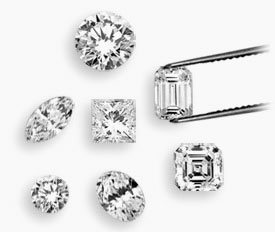 Diamonds have been a source of fascination for centuries. The word "diamond" comes from the Greek word "Adamas", meaning "Unconquerable". Diamond is a transparent gem made of carbon, which is one of the Earth's most common elements.
Diamonds have been a source of fascination for centuries. The word "diamond" comes from the Greek word "Adamas", meaning "Unconquerable". Diamond is a transparent gem made of carbon, which is one of the Earth's most common elements.
The diamond is the hardest known substance in the world. Billions of years ago, in a deep layer of the earth, a unique combination of chemicals, pressure and changes in temperature created diamonds out of pure carbon.
The Diamond is uniquely resistant to damage by heat or scratching and can be cut or polished only by another diamond. The diamond is thousands of times harder than corundum, the next hardest substance from which rubies and sapphires are formed. Even after many years of constant wear, diamonds will preserve their sharp edges and corners when most other stones will have become worn and chipped. However, many people expect a diamond to be unbreakable. This is not true. A diamond's crystal structure has "hard" and "soft" directions. A blow of sufficient force, in an exact direction, can crack, chip, split or even shatter a diamond.
Early History
The first recorded history of the diamond dates back some 3,000 years to India, where it is likely that diamonds were first valued for their ability to reflect light. In those early days, diamonds were used in two ways, first, for decorative purposes, and secondly as a talisman to ward off evil or provide protection in battle.
The Middle Ages
During the Middle Ages more attention was paid to the worth of diamonds, rather than the mystical powers surrounding them. Due to the improved public awareness of the value of diamonds, mine owners perpetuated myths that diamonds were poisonous. This was to prevent the mineworkers from swallowing the diamonds to smuggle them out of the mines.
The popularity of diamonds surged during the middle ages, with the discovery of many large and famous stones in India, such as the Koh-I-Noor and the Blue Hope. When the Indian diamond supply dwindled, smaller finds occurred in Borneo and Brazil, but these were not sufficient to meet the ever-increasing demand for diamonds. The mid-nineteenth century discovery of diamonds near the Orange River in South Africa sparked the world's biggest diamond rush and helped to satiate the world's increasing appetite for diamonds.
Recent Times
On October 2, 1979, geologists found the Argyle pipe near Lake Argyle in Australia: the richest diamond deposit in the world. Since then, Argyle has become the world's largest volume producer of diamonds, and alone is responsible for producing over a third of the world's diamonds every year.
Currently, most diamonds are mined in the following countries: South Africa, Zaire, Russia, Canada, Australia, Botswana, Angola, Namibia, Brazil, Ghana, and China. The major cutting centers of the diamond world are in Antwerp, Bombay, Tel Aviv, and New York.
Diamond – The Symbol of Love
Diamond has become ‘The Symbol of Love’ throughout the world. The tradition of giving diamonds as tokens of love and commitment began at the end of the 15th century when Austrian Archduke Maximilian gave a diamond ring to his fiancé. They chose to place the ring on the fourth finger of the left hand because legend held that this finger provided a direct link between tokens of love and the heart.
The diamond's strength and pure transparent beauty have always represented the purest emotions of human heart -- commitment and deep lasting love.
Journey of a Diamond
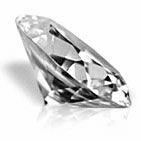 Everyone knows that diamonds are among the most precious items on earth, but not everyone realizes that the journey of this stone is very long and difficult. Lots of efforts are required to develop its beauty from a rough stone to a beautiful faceted gem.
Everyone knows that diamonds are among the most precious items on earth, but not everyone realizes that the journey of this stone is very long and difficult. Lots of efforts are required to develop its beauty from a rough stone to a beautiful faceted gem.
Here is a brief recount of a diamond's incredible trip from Earth to the retail market.
A diamond's story begins deep in the earth - 100 to 200 miles below the surface. Approximately 3 billion years ago, these stones were formed because of massive heat and pressure placed on carbon crystals.
Basically, diamonds have two main uses: in Jewelry (due to their rarity and beautiful appearance) and in Industrial Applications (due to their unique molecular properties). In terms of quantity, about 30% of diamonds are of gem quality and are distributed to experts for cutting, polishing and jewelry production. The remaining 70% of diamonds are sold to industries for cutting, drilling, grinding and polishing in industrial applications.
The journey of a diamond from the Earth to Retail contains several stages which are explained below:
Diamond Process Flowchart

Exploration
Due to powerful volcanic activities, 'pipes' are formed which are nothing but openings in the earth and through these pipes, some diamonds and other minerals such as kimberlite etc. are forced up to the surface. Most of the diamonds which are forced up through the earth settled back into the kimberlite rocks in these pipes.
In this process, diamond prospectors explore the possibility of diamond existence deep below the Earth and search for kimberlite rocks by testing the ground for changes in magnetic fields.
Although diamonds are found in numerous exotic locations around the world, Australia, Botswana, Canada, Democratic Republic of Congo, Namibia, Russia and South Africa account for some 80% of the world's diamond supply.
Mining
Once kimberlite or diamonds are discovered after the process of exploration then mining operations are used to extract these minerals.
In Mining operations, the following methods are mainly used to extract diamonds:
Open Pit Mining - This is a method of extracting rock or minerals from the earth by their removal from an open pit. In other words, an open pit mine refers to an excavation or cut made at the surface of the ground for extracting ore. Open pit mines are used when deposits of minerals are found near the surface or along kimberlite pipes.
Underground Mining - This refers to various techniques used to mine gems, minerals, and ore bodies by tunneling underground and creating underground "rooms" supported by timber pillars of standing rock.
Marine Mining - This is a method of excavating diamonds from the seabed. Today, due to enhancements in technology, marine mining has also become commercially viable.
Artisanal Mining - This is a non-industrial method of mining where individuals, families and communities are involved in mining by using the most basic equipment, such as sieves and pans.
After extraction, the ore containing the rough diamonds goes through many stages of blasting, crushing and processing, including advanced x-ray techniques, to release the diamonds. It is estimated that it takes more than 250 tons of ore to produce just one carat of rough diamond. Over 120 million carats of rough diamonds are mined each year, out of which only about a quarter will be considered gem quality.
Sorting
Once the rough diamonds have been mined and processed, the next step is to sort, classify and value them. In the process of sorting, the rough diamonds are grouped, according to their size, shape, quality and color, in to thousands of categories.
Cutting & Polishing
The next step for the rough diamonds are cutting and polishing. This is a great skill, with meticulous techniques that have been practiced for ages. Gem quality diamonds are usually distributed to one of the main diamond cutting and trading centers in Antwerp, Mumbai, Tel Aviv, New York, Johannesburg, China or Thailand.
Although some of the polishing process is computerized, most of the work is still performed by hand. First, the cutter uses cleaving, sawing or laser cutting to separate the original rough into smaller, more workable pieces. Then, the girdler uses a process called bruting to grind away the edges of the stone and provides its outline shape. Faceting follows, usually in two steps. The first 18 facets (table, culet, bezel and pavilion of a stone) are cut and polished by the blocker. The brillianteer cuts and polishes the final 40 facets, including the star, upper girdle and lower girdle. Finally, the cut gem is boiled in acids to remove dust and oil.
Jewelry Manufacturing
Once polished, most diamonds are sold and traded in the 24 registered diamond bourses around the world. At this point, the polished diamonds are ready to be set into finished pieces of jewelry, which is the manufacturer's job. USA, India, China, Italy, Spain, Thailand and Turkey have established solid reputations in jewelry manufacturing.
Retailing
Finally, diamond jewelry is either sold to a wholesaler, who works as a middleman to sell the goods to the retailer or sold directly to the retailer. Lastly, retailers sell the diamond jewelry to the consumers.
The value of diamond jewelry sold each year exceeds US$60 billion, which includes the cost of the diamonds, precious metals and other gems. USA represents the largest market share (55%), followed by Japan (15%), Europe (10%), Asia Pacific (5%), Asia Arabic (5%) and other countries (10%). According to independent research, diamond jewelry is the most highly sought-after category of luxury goods, both by women and men for themselves or for gifts. The diamond industry employs approximately ten million people around the world, both directly and indirectly, across a wide spectrum of roles from mining to retailing.
Facts About Diamonds
- The diamond is the hardest natural substance found on the Earth and incredibly, it is the only gemstone made of just one element – carbon. Read some more interesting facts about diamonds…
- Diamond is the hardest natural substance found on Earth.
- Incredibly, diamond is the only gemstone made of just one element - carbon.
- Most diamonds, found in nature, were formed 1 to 3 billion years ago due to extreme heat and pressure. These diamonds were formed 100 to 200 miles below the surface of Earth. Volcanic activity brings diamond crystals much closer to the earth's surface.
- A rough diamond looks so much like a pebble that most people would pass it by without a second glance.
- The diamond is the most effective heat conducting material, meaning it expands very little when subjected to high temperatures, unlike most other conducting materials.
- To burn a diamond, it must be heated at more than a thousand degrees Fahrenheit and it will simply vanish, without leaving ash. Only a little carbon dioxide will be released.
- Many people expect a diamond to be unbreakable. This is not true. A diamond's crystal structure has 'hard' and 'soft' directions. A blow of sufficient force, in an exact direction, can crack, chip, split or even shatter a diamond.
- Diamonds were first mined in India over 2,800 years ago.
- It is estimated that only 500 tons of diamonds have been mined in recorded history to date.
- More than 250 tons of ore need to be blasted, crushed and processed to produce just one carat of rough diamond.
- In one-thousand polished diamonds, only one will weigh more than one carat.
- The largest diamond ever found is the Cullinan weighing 3,106 carats.
- On average, each stone will lose 50% of its original weight during cutting and polishing.
- Diamonds come in a spectrum of colors. Colored diamonds are called "fancies". Blue and pink diamonds are among the rarest, whereas yellow and brown are among the most common.
- 80% of the world's diamonds are not suitable for Jewelry. These are used for industrial purposes.
- Diamonds are one of the world's, and specifically Africa's, major natural resources.
- An estimated US$13 billion worth of rough diamonds are produced per year, of which approximately US$8.4 billion are from Africa (approximately 65%).
- The diamond industry employs approximately ten million people around the world, both directly and indirectly, across a wide spectrum of roles from mining to retailing.
- Global diamond jewelry sales continue to grow, increasing three-fold in the past 25 years, and are currently worth in excess of US$60 billion every year.
- Australia produces the most diamonds in volume.
- The most recent diamond discoveries were made in North America - in the Northwest Territories of Canada and in Colorado.
- America buys more than half of the world's total gem quality diamonds, accounting for the world's largest diamond market.
- The largest diamond ever found in the US was discovered in 1924 in The Crater of Diamonds State Park in Arkansas - the "Uncle Sam Diamond" that weights 40.23 carats.
- The Crater of Diamonds State Park in Arkansas is the world's only diamond mine open to the public and this is a dig-for-fee operation for tourists and rock enthusiasts. An average of 74,000 visitors come to the park each year. About one out of 100 visitors find a diamond.
- The Cullinan
- The Cullinan I / Great Star of Africa
- The Cullinan II
- The Centenary Diamond
- The Orloff
- The Regent
- Koh-i-Noor (Mountain of Light)
- The Great Chrysanthemum
- The Idol's Eye
- The Taylor-Burton
- The Sancy
- The Blue Hope
- The Tiffany
- Hortensia
Most Famous Diamonds
Diamonds are appreciated for their beauty and rarity and considered a symbol of wealth and power. The largest and most rare stones have been noted throughout history. Below is detailed information of some of the World’s Most Famous Diamonds of all time…
1. The Cullinan
Carat Weight: 3106 carats before Cut
Source: Found in 1905, Transvaal, South Africa
This was the largest diamond crystal ever found with a weight of 3,106 carats in the rough or over 1 ¼ pounds. The Cullinan gets its name from Sir Thomas Cullinan who was chairman of the mining company that discovered it. It was found in 1905. Frederick Wells, manager of the Premier Mine in South Africa, received $10,000 from the company as a gift for this discovery. It was purchased by the Transvaal Government and presented to King Edward VII of England.
The Cullinan was cut into 9 major stones and 96 smaller stones. After the cutting of the Cullinan, the following nine major stones were created:
- Cullinan I (pear, 530.20 carats)
- Cullinan II (cushion, 317.40 carats)
- Cullinan III (pear, 94.40 carats)
- Cullinan IV(square cushion, 63.60 carats)
- Cullinan V (heart, 18.50 carats)
- Cullinan VI (marquise, 11.50 carats)
- Cullinan VII (marquise, 8.80 carats)
- Cullinan VIII (rectangular cushion, 6.80 carats)
- Cullinan IX (pear, 4.39 carats)
The Cullinan was cut by Joseph Asscher and Company of Amsterdam, who examined the enormous crystal for around six months before determining how to divide it. Though the goal was to split the diamond into only five crystals, it ended up being broken into nine crystals. When the Cullinan was first discovered, certain signs suggested that it may ha

















































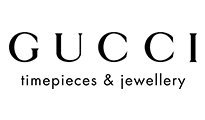
 call
call Store
Store






